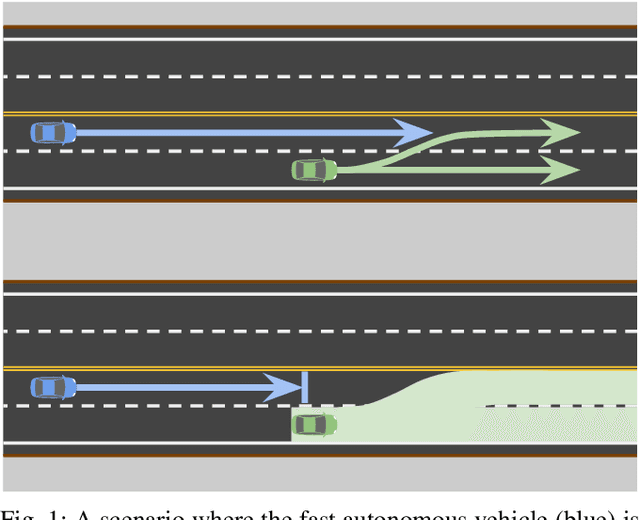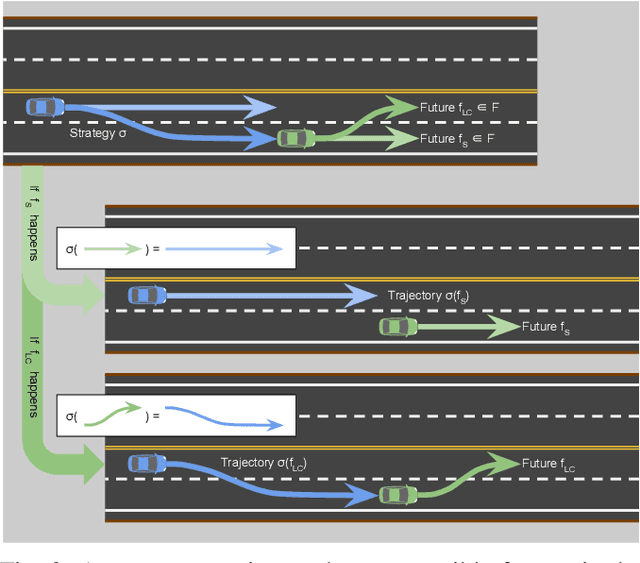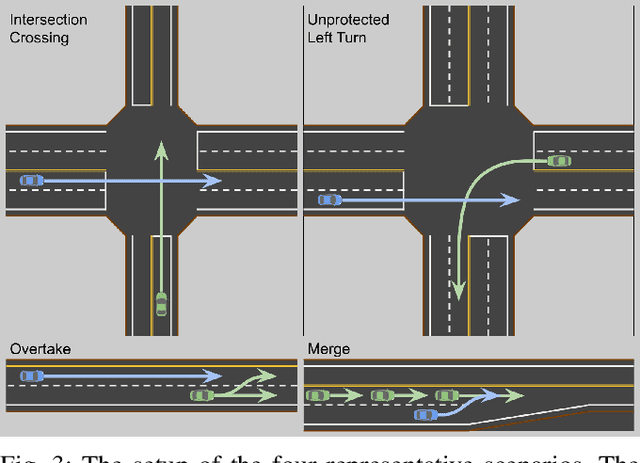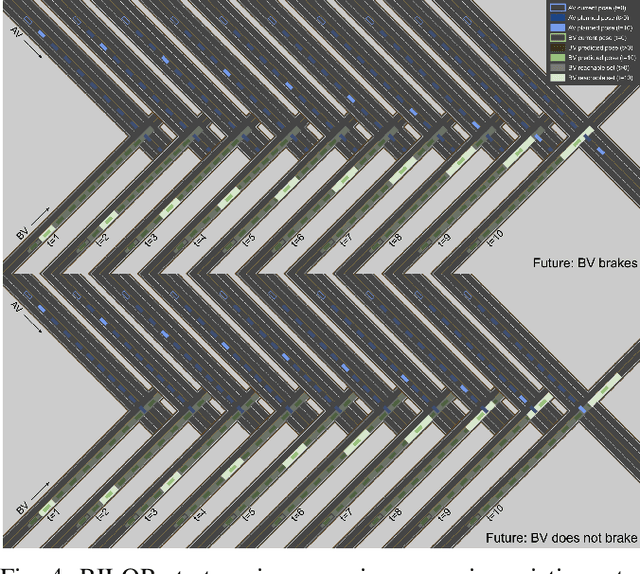Comprehensive Reactive Safety: No Need For A Trajectory If You Have A Strategy
Paper and Code
Jul 11, 2022



Safety guarantees in motion planning for autonomous driving typically involve certifying the trajectory to be collision-free under any motion of the uncontrollable participants in the environment, such as the human-driven vehicles on the road. As a result they usually employ a conservative bound on the behavior of such participants, such as reachability analysis. We point out that planning trajectories to rigorously avoid the entirety of the reachable regions is unnecessary and too restrictive, because observing the environment in the future will allow us to prune away most of them; disregarding this ability to react to future updates could prohibit solutions to scenarios that are easily navigated by human drivers. We propose to account for the autonomous vehicle's reactions to future environment changes by a novel safety framework, Comprehensive Reactive Safety. Validated in simulations in several urban driving scenarios such as unprotected left turns and lane merging, the resulting planning algorithm called Reactive ILQR demonstrates strong negotiation capabilities and better safety at the same time.
 Add to Chrome
Add to Chrome Add to Firefox
Add to Firefox Add to Edge
Add to Edge